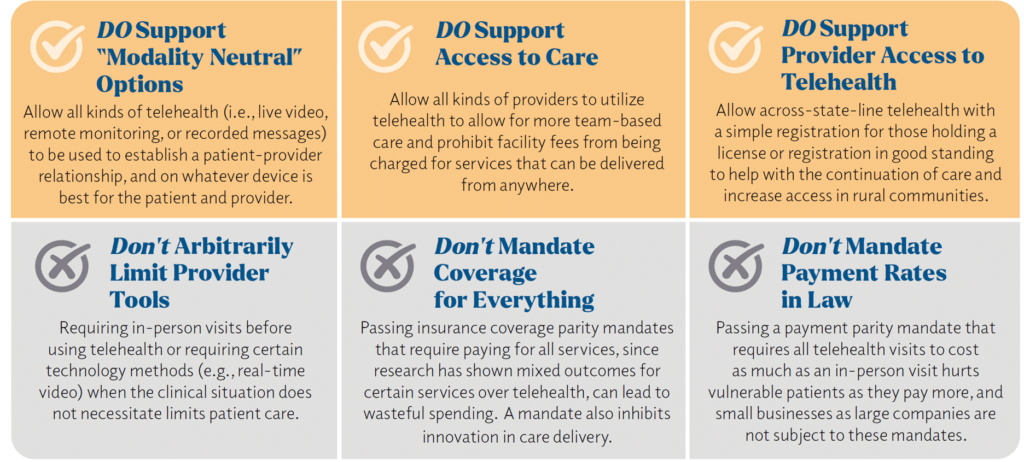Millions of Americans tried telehealth for the first time during the COVID-19 pandemic. Federal officials made select changes to the Medicare program and governors advanced health access with flexible provider licensure for new uses of telehealth by waiving certain barriers by executive order. All of these changes garnered numerous headlines, and many state legislatures followed suit by updating their laws.
But once the public health emergency declarations started to end or executive orders were withdrawn, overnight or shortly after, many of the new flexibilities were lost. Furthermore, even though many states passed new laws related to telehealth, many of them made incremental changes because policymakers lacked a best practices roadmap for success.
While they cannot and should not replace all in-person medical appointments, virtual visits can save patients time and help them avoid germ-filled waiting rooms. Providers can also cut down on their risk of exposure and take some pressure off overburdened systems as they can see patients from an office or home. To experience the full potential of telehealth, states should follow these best practices.

This toolkit aims to help policymakers take the next step toward a more quality-oriented, affordable, and innovative health system by ensuring that their state laws on telehealth remove deleterious barriers that have historically discriminated against those in certain geographies, such as those living in rural communities or in underserved urban areas. This report explains policy best practices for ensuring that providers and patients can fully realize the benefits of using telehealth services when appropriate and provides a simple-to-read stoplight rating for each state on how closely their policies align with those best practices. The state profiles point state lawmakers to specific sections of law and regulation that need to change to improve their ranking.
States need to act now to ensure the physical and economic needs of their state are met with a more quality and future-oriented health system.
Full Report: Rating States on Telehealth Best Practices
State Policy Agenda for Telehealth Innovation
Previous Jan. 5, 2022 Version of this Report: Rating the States on Telehealth Best Practices

